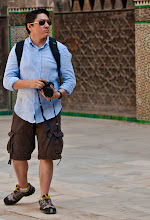Reflections
Find them everywhere
The strongest reflections come when a relatively low angle of light strikes directly on the object being reflected, not directly on the reflecting surface. But side-lit reflections give you nice gradations of color, especially with a blue sky and backlighting creates moody results in a limited color palette
Be flexible
A reflection doesn't have to be crystal clear. Muted reflections (sucn as on dishes or polished wood) make great abstractions
Focus into the scene
To preserve the texture or detail of your reflecting surface, focus in about 1/3 of the way. What the surface to be a perfect mirror? Set the focus top infinity
Bracket
Especially in early morning or late afternoon when there can be huge contrast between the lighting of the reflecting surface to its reflection
Use Aperture Priority
DOF can be tricky So set an f/stop that gives you as much or little DOF as you need and let this dictate the Shutter speed
Go Wide
Stymied by the DOF? Use a wide angle lens, DOF is less of an issue and you will have more in-focus latitude
Read right
To correct reversed type use image editing SW to flip the image horizontally
Think Manual
To get both the reflection and reflecting surface (i.e puddle reflection and puddle edges) in focus, switch off AF and manually set your lens to the hyperfocal distance. The point of focus that jeeps the creates range of foreground in focus trough infinity.Stop down your lens with DOF preview button. Focus on a foreground object then move the focus further away until the background point just comes into focus.
Keep yourself out
Wear dark clothing and cover shiny camera surfaces with black gaffer's tape to be as unobtrusive as possible to the shot
Cant find a reflection
Make one. Carry a compact mirror and you can always create reflection image.




0 comments:
Post a Comment